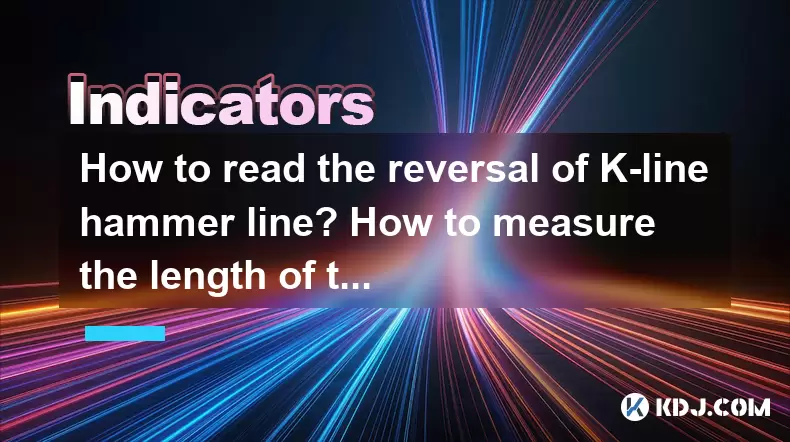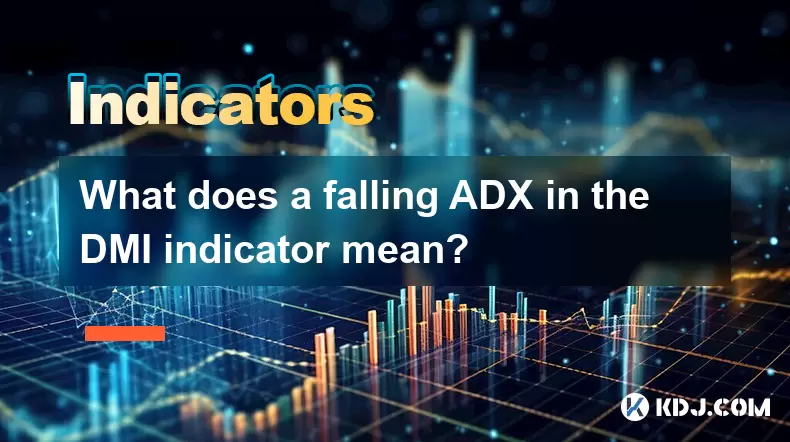-
 Bitcoin
Bitcoin $116700
0.24% -
 Ethereum
Ethereum $3973
4.34% -
 XRP
XRP $3.283
7.68% -
 Tether USDt
Tether USDt $1.000
0.01% -
 BNB
BNB $789.8
2.27% -
 Solana
Solana $176.2
3.31% -
 USDC
USDC $0.9999
0.00% -
 Dogecoin
Dogecoin $0.2238
5.14% -
 TRON
TRON $0.3389
-0.51% -
 Cardano
Cardano $0.7907
4.03% -
 Stellar
Stellar $0.4527
10.02% -
 Hyperliquid
Hyperliquid $41.07
4.27% -
 Sui
Sui $3.794
1.77% -
 Chainlink
Chainlink $19.49
10.40% -
 Bitcoin Cash
Bitcoin Cash $580.9
0.74% -
 Hedera
Hedera $0.2617
4.32% -
 Avalanche
Avalanche $23.41
3.67% -
 Ethena USDe
Ethena USDe $1.001
-0.03% -
 Litecoin
Litecoin $122.4
1.38% -
 Toncoin
Toncoin $3.364
1.49% -
 UNUS SED LEO
UNUS SED LEO $8.988
0.37% -
 Shiba Inu
Shiba Inu $0.00001295
2.82% -
 Uniswap
Uniswap $10.62
5.75% -
 Polkadot
Polkadot $3.922
4.46% -
 Dai
Dai $1.000
0.01% -
 Bitget Token
Bitget Token $4.494
2.15% -
 Monero
Monero $268.0
-1.30% -
 Cronos
Cronos $0.1523
3.68% -
 Pepe
Pepe $0.00001127
4.43% -
 Aave
Aave $285.4
4.85%
How to read the reversal of K-line hammer line? How to measure the length of the lower shadow?
The K-line hammer line, a bullish reversal pattern, features a small body and a long lower shadow at least twice its length, signaling strong buying pressure after a downtrend.
Jun 01, 2025 at 02:14 pm

Understanding the K-Line Hammer Line Reversal
In the realm of cryptocurrency trading, understanding the nuances of candlestick patterns is crucial for making informed decisions. One such pattern that traders frequently encounter is the K-line hammer line, often indicative of a potential bullish reversal. This article delves into how to read this pattern and how to accurately measure the length of the lower shadow, which is a key component of the hammer line.
Identifying the Hammer Line
The hammer line is a bullish reversal pattern that typically appears at the bottom of a downtrend. It is characterized by a small body at the top of the candlestick and a long lower shadow, which is at least twice the length of the body. The color of the body can be either red or green, although a green body is considered more bullish.
To identify a hammer line, look for the following features:
- A small body at the upper end of the trading range.
- A long lower shadow that is at least twice the length of the body.
- Little to no upper shadow, which distinguishes it from other candlestick patterns like the inverted hammer.
Reading the Reversal Signal
When a hammer line appears after a downtrend, it suggests that the sellers have pushed the price down, but the buyers have managed to push it back up to near the opening price. This tug-of-war results in the long lower shadow, indicating strong buying pressure at lower levels.
To read the reversal signal effectively, consider the following:
- Confirm the downtrend: Ensure that the hammer line appears after a clear downtrend.
- Volume analysis: Higher trading volume on the day the hammer line forms can reinforce the reversal signal.
- Subsequent price action: Look for bullish confirmation in the following sessions, such as a higher high or a bullish engulfing pattern.
Measuring the Length of the Lower Shadow
Accurately measuring the length of the lower shadow is essential for confirming the validity of the hammer line. The lower shadow represents the range between the lowest price point reached during the session and the closing price. Here’s how to measure it:
- Identify the lowest point: Locate the lowest price point of the candlestick, which is the bottom of the lower shadow.
- Identify the closing price: Determine the closing price, which is the top of the body if the candlestick is bullish, or the bottom of the body if it is bearish.
- Calculate the length: Subtract the lowest point from the closing price to get the length of the lower shadow.
For example, if the lowest point of the candlestick is $10 and the closing price is $12, the length of the lower shadow is $2.
Practical Application in Cryptocurrency Trading
In the context of cryptocurrency trading, the hammer line can be a powerful tool for identifying potential entry points. Here are some practical steps to apply this knowledge:
- Monitor the market: Keep an eye on the price charts of cryptocurrencies you are interested in trading.
- Identify downtrends: Use technical analysis tools to confirm that the cryptocurrency is in a downtrend.
- Spot the hammer line: Once a downtrend is confirmed, look for the formation of a hammer line.
- Confirm the signal: Check for increased volume and subsequent bullish price action to validate the reversal signal.
- Enter the trade: Consider entering a long position if the hammer line and subsequent confirmation are strong.
Using Technical Indicators to Enhance Analysis
While the hammer line can be a standalone indicator, combining it with other technical indicators can enhance its reliability. Some useful indicators include:
- Moving Averages: Use moving averages to confirm the trend direction. A hammer line forming near a key moving average can be a strong signal.
- Relative Strength Index (RSI): An RSI reading that moves from oversold to neutral can complement the hammer line's bullish reversal signal.
- MACD (Moving Average Convergence Divergence): A bullish crossover in the MACD can provide additional confirmation of the reversal.
Case Study: Hammer Line in Bitcoin Trading
To illustrate the practical application of the hammer line, let’s consider a hypothetical example involving Bitcoin. Suppose Bitcoin has been in a downtrend, dropping from $50,000 to $40,000 over several weeks. During this downtrend, a hammer line forms with the following characteristics:
- Opening price: $40,200
- Lowest price: $39,000
- Closing price: $40,100
- Volume: Significantly higher than the average trading volume
In this scenario, the length of the lower shadow is $1,100 ($40,100 - $39,000), which is more than twice the length of the body ($100). The increased volume and the subsequent bullish price action confirm the reversal signal, suggesting that it might be a good time to enter a long position.
Frequently Asked Questions
Q1: Can a hammer line appear during an uptrend?
A1: While the hammer line is typically a bullish reversal pattern that appears at the end of a downtrend, it can occasionally appear during an uptrend. However, in an uptrend, it is often called a "hanging man" and is considered a bearish reversal signal.
Q2: How long should I wait for confirmation after spotting a hammer line?
A2: The confirmation period can vary, but it is generally recommended to wait for at least one to two trading sessions to see if the price action supports the bullish reversal signal. Look for higher highs or bullish candlestick patterns in the subsequent sessions.
Q3: Is the hammer line a reliable indicator on its own?
A3: The hammer line can be a reliable indicator, but it is most effective when used in conjunction with other technical analysis tools. Relying solely on the hammer line without considering volume, subsequent price action, and other indicators can lead to false signals.
Q4: Can the hammer line be used for short-term or long-term trading?
A4: The hammer line can be used for both short-term and long-term trading, depending on the time frame of the chart you are analyzing. For short-term trading, use shorter time frames like 1-hour or 4-hour charts. For long-term trading, consider daily or weekly charts.
Disclaimer:info@kdj.com
The information provided is not trading advice. kdj.com does not assume any responsibility for any investments made based on the information provided in this article. Cryptocurrencies are highly volatile and it is highly recommended that you invest with caution after thorough research!
If you believe that the content used on this website infringes your copyright, please contact us immediately (info@kdj.com) and we will delete it promptly.
- Roman Storm, Funding Effort, and the Looming Defense Retrial: A New York Minute on the Tornado Cash Case
- 2025-08-09 02:50:14
- Crypto's Wild Ride: XRP, Dogecoin, and the Altcoin Surge You Can't Ignore
- 2025-08-09 02:50:14
- Elon Musk, Bitcoin, and the Enduring Power of Approval: A Crypto Love Story?
- 2025-08-09 03:50:15
- Ruvi AI: The Next Big Thing After Ripple on CoinMarketCap?
- 2025-08-09 03:50:15
- Floki Price Surges: Elliott Wave and Fibonacci Setups Point to Potential Gains!
- 2025-08-09 02:30:16
- Pepe Price, RTX (Remittix?) & the $10K ETH Dream: NYC Crypto Chatter
- 2025-08-09 02:30:16
Related knowledge

What does it mean when the TRIX indicator suddenly diverges downward after a long period of convergence?
Aug 09,2025 at 12:56am
Understanding the TRIX Indicator in Cryptocurrency TradingThe TRIX indicator, or Triple Exponential Average, is a momentum oscillator used in technica...

Why is the rise limited after a MACD bottoming divergence?
Aug 09,2025 at 12:07am
Understanding MACD Bottoming Divergence in Cryptocurrency TradingThe MACD (Moving Average Convergence Divergence) is a widely used technical indicator...

What does it mean when the OBV continues to rise but the price is trading sideways?
Aug 08,2025 at 10:35pm
Understanding On-Balance Volume (OBV)On-Balance Volume (OBV) is a technical indicator that uses volume flow to predict changes in stock or cryptocurre...

What does a falling ADX in the DMI indicator mean?
Aug 09,2025 at 03:16am
Understanding the ADX and DMI Indicator FrameworkThe DMI (Directional Movement Index) is a technical analysis tool developed by J. Welles Wilder to id...

What does a double top pattern on the Williams oscillator mean?
Aug 09,2025 at 02:36am
Understanding the Williams %R OscillatorThe Williams %R oscillator is a momentum indicator developed by Larry Williams to identify overbought and over...

What is a nonce and how is it used in Proof of Work?
Aug 04,2025 at 11:50pm
Understanding the Concept of a Nonce in CryptographyA nonce is a number used only once in cryptographic communication. The term 'nonce' is derived fro...

What does it mean when the TRIX indicator suddenly diverges downward after a long period of convergence?
Aug 09,2025 at 12:56am
Understanding the TRIX Indicator in Cryptocurrency TradingThe TRIX indicator, or Triple Exponential Average, is a momentum oscillator used in technica...

Why is the rise limited after a MACD bottoming divergence?
Aug 09,2025 at 12:07am
Understanding MACD Bottoming Divergence in Cryptocurrency TradingThe MACD (Moving Average Convergence Divergence) is a widely used technical indicator...

What does it mean when the OBV continues to rise but the price is trading sideways?
Aug 08,2025 at 10:35pm
Understanding On-Balance Volume (OBV)On-Balance Volume (OBV) is a technical indicator that uses volume flow to predict changes in stock or cryptocurre...

What does a falling ADX in the DMI indicator mean?
Aug 09,2025 at 03:16am
Understanding the ADX and DMI Indicator FrameworkThe DMI (Directional Movement Index) is a technical analysis tool developed by J. Welles Wilder to id...

What does a double top pattern on the Williams oscillator mean?
Aug 09,2025 at 02:36am
Understanding the Williams %R OscillatorThe Williams %R oscillator is a momentum indicator developed by Larry Williams to identify overbought and over...

What is a nonce and how is it used in Proof of Work?
Aug 04,2025 at 11:50pm
Understanding the Concept of a Nonce in CryptographyA nonce is a number used only once in cryptographic communication. The term 'nonce' is derived fro...
See all articles

























































































